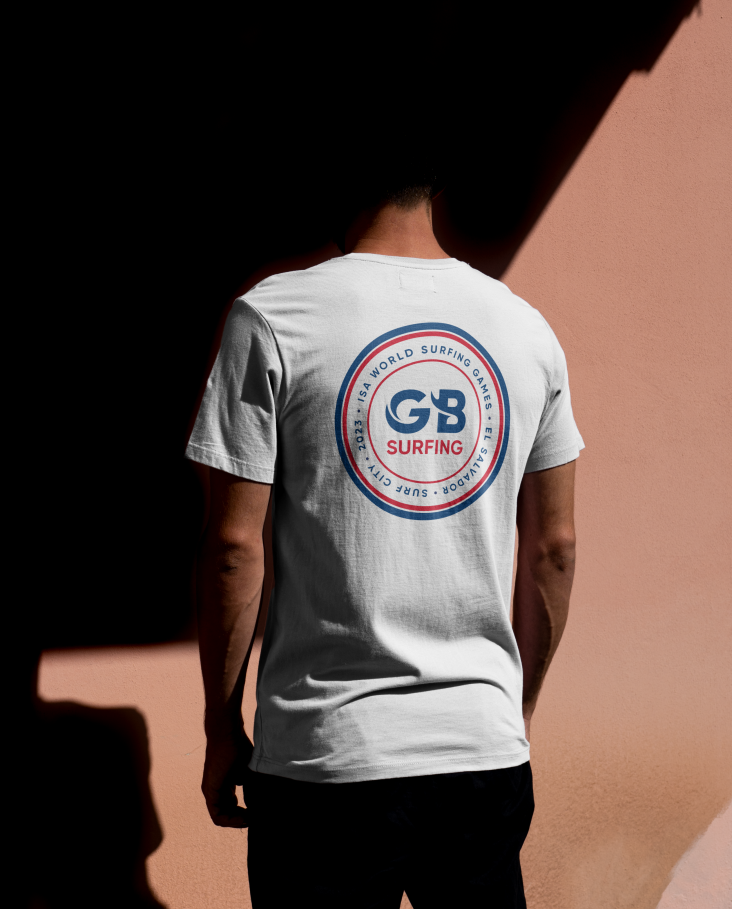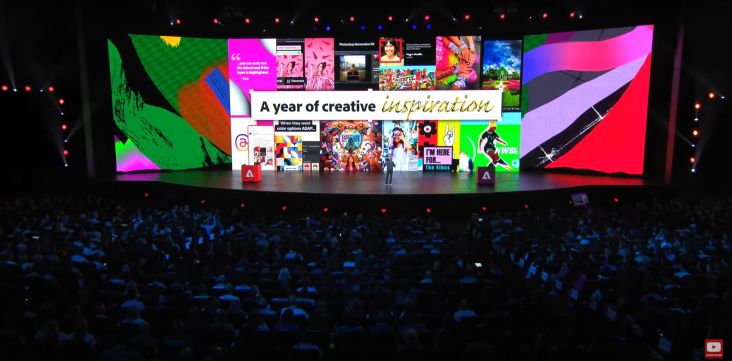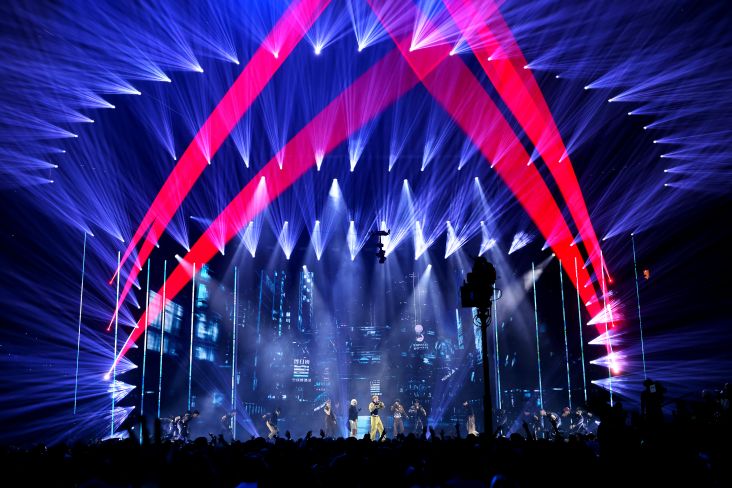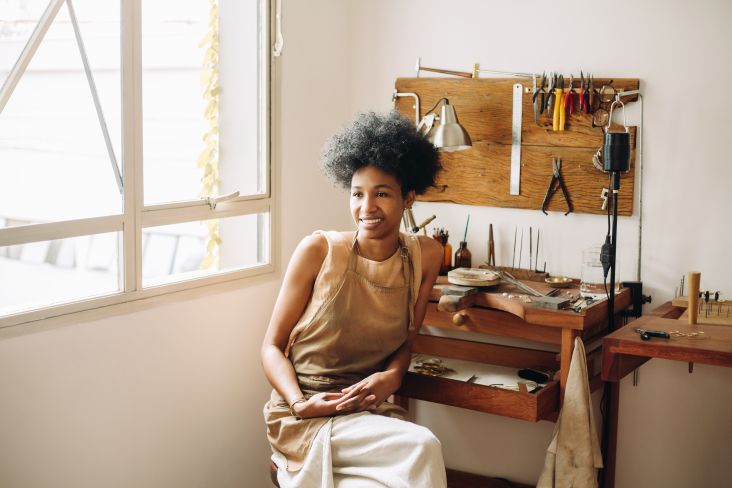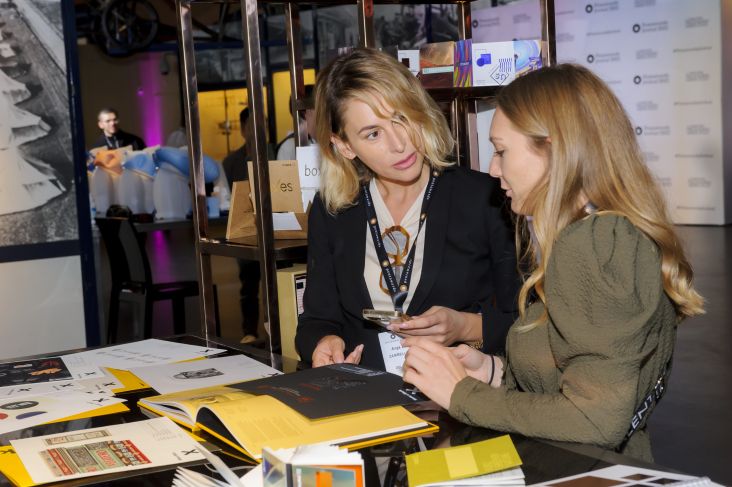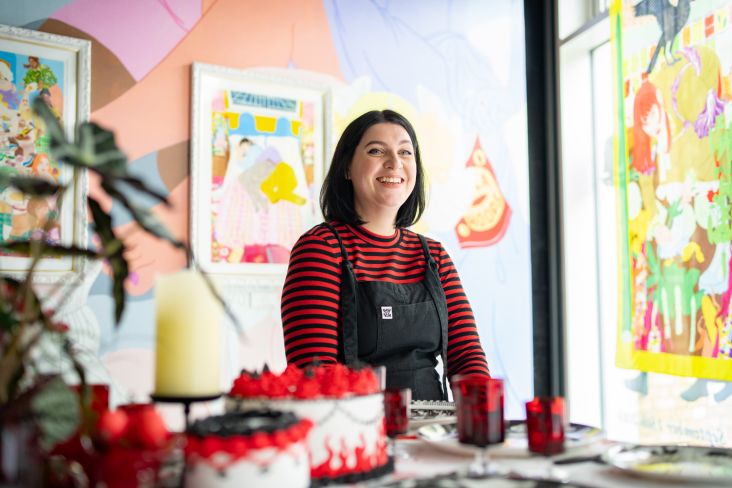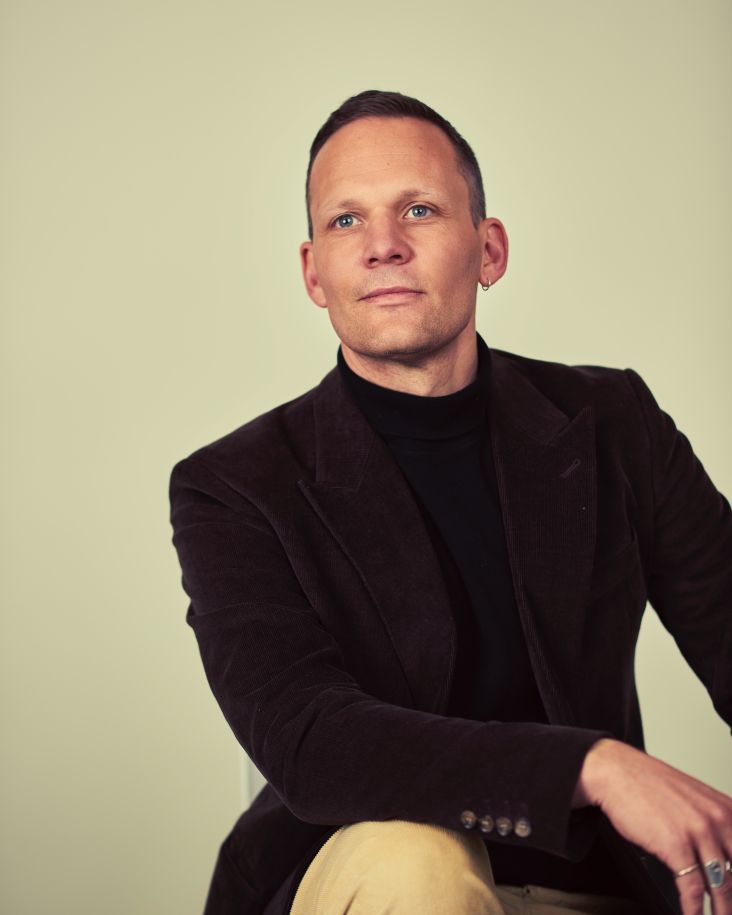Veronica Castro on the V&A's Diva exhibition and why it's a word we need to reclaim
As London's Victoria & Albert Museum puts costumes for Cher, Elton and Marilyn Monroe on display, project curator Veronica Castro explains why divas have been culturally important from the 19th century to the modern day.
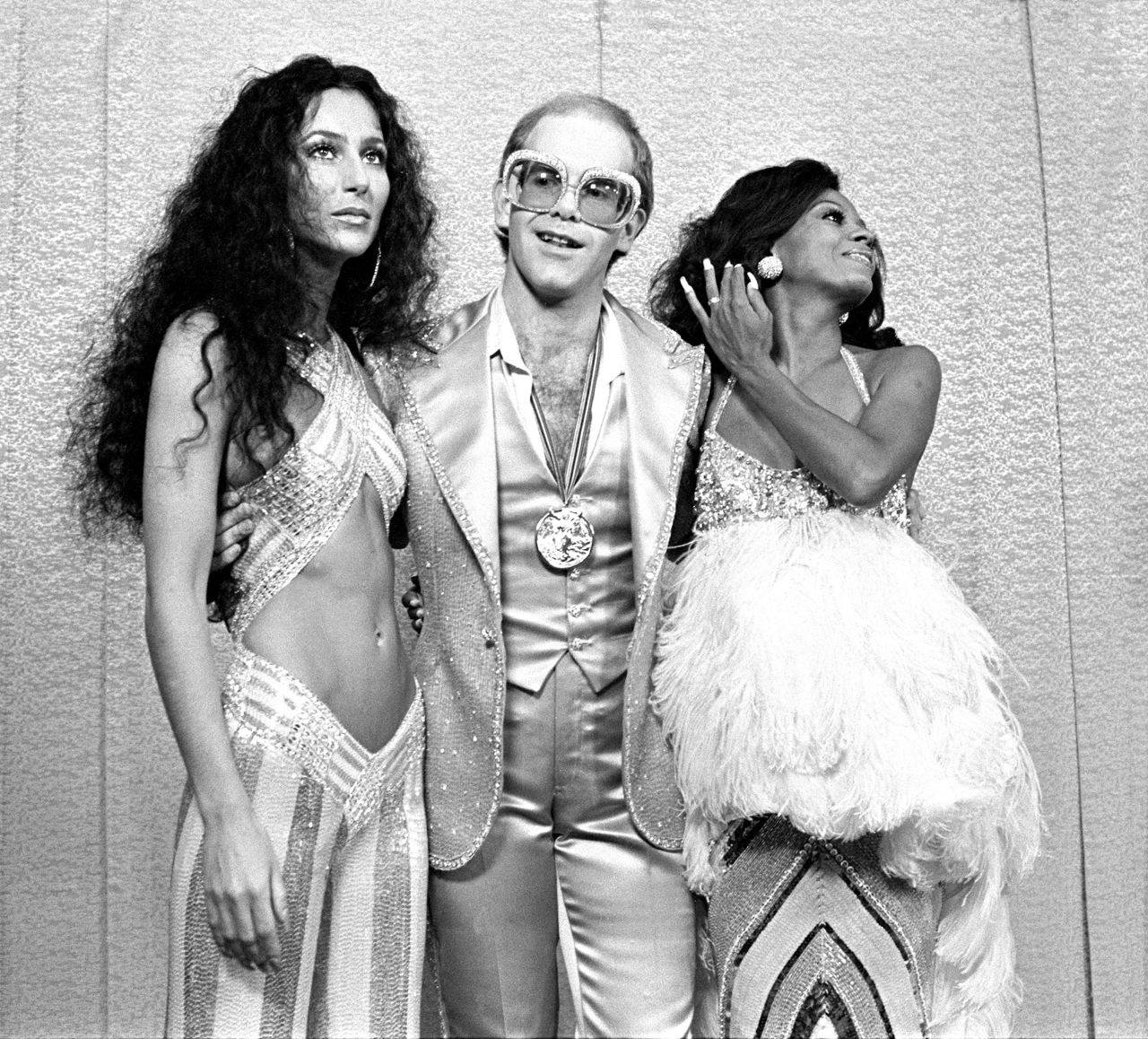
Cher, Elton John and Diana Ross at Rock Awards Santa Monica Civic Auditorium 1975; Various Locations; Mark Sullivan 70's Rock Archive Photo: Mark Sullivan/Contour by Getty Images
If you've never been to West London's V&A, short for Victoria & Albert Museum, it's well worth a look. The building itself is extraordinary and a work of art in itself. And the collections, which focus on applied arts, decorative arts and design, are beautifully curated and cover themes and topics rarely explored in other museums in the capital.
Plus, right now, there's an extra reason to visit: the chance to see original costumes worn by Maria Callas, Cher, Elton John, Janelle Monae and Marilyn Monroe in a major exhibition titled DIVA, running until 7 April 2024.
As the title suggests, it celebrates the powerful and personal stories of creativity, ambition, and resilience of some of the best-known divas, from opera goddesses and silent movie stars to sirens of the big screen and today's global megastars.
Rare pieces
The exhibition showcases over 250 objects drawn from the V&A collection and loans from across the world, spanning fashion, photography, design, costumes, music, and live performance.
Delving into the origins of the term 'diva' – meaning goddess in Latin – it explores how the meaning of the word has been subverted and embraced over time and how the label has been reclaimed by performers, their fans and wider society.
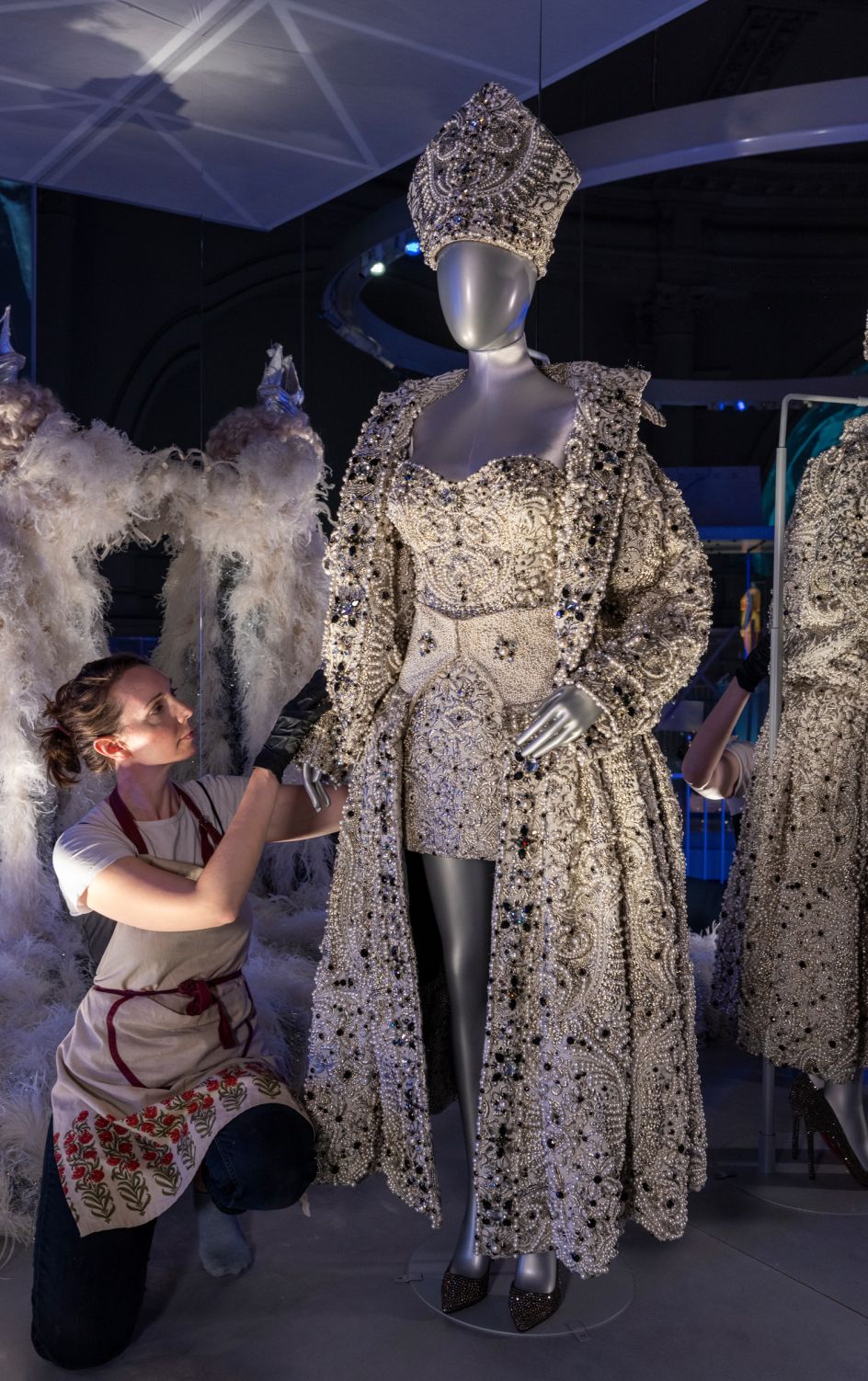
Behind the scenes at Diva at the V&A © Victoria and Albert Museum, London
But it's not all about glitz and celeb culture. The exhibition also explores how performers have intersected with society and driven change through their platforms and profiles for social good and political change, including global civil rights and feminism.
Many of these looks are on museum display for the first time, including:
- a stage ensemble worn by Maria Callas in the Covent Garden Opera Company production of Norma (1952)
- the fringed black dress worn by Marilyn Monroe as Sugar 'Kane' Kowalczyk in Some Like it Hot (1959)
- the only known surviving dress worn by Clara Bow, rarely seen outside of the US
- iconic costumes designed by fashion designer Bob Mackie, including looks worn by Tina Turner, P!nk and Cher
- a Louis XIV-inspired look, with a towering powdered wig and train worn by Elton John for his 50th birthday celebration, designed by Sandy Powell
- Shirley Bassey's couture pink gown designed by Julien MacDonald, including diamanté-studded wellington boots, worn on stage at Glastonbury (2007)
- Janelle Monae's 'vulva pants' designed by Duran Lantink for the music video Pynk (2018)
Also on display are ephemera, including posters, song sheets and handwritten lyric sheets, as well as personal objects and accessories owned by divas; examples of diva branding, highlighting the entrepreneurial and enterprising spirit of these divas; and key photographic works by photographers including Sheila Rock, David Corio and Nick Knight. There's also a video wall celebrating the art of drag and its relationship to the diva.
To learn more, we chatted with project curator Veronica Castro about the thinking behind the exhibition and how it was put together.
What inspired this exhibition?
Lead curator Kate Bailey became fascinated by the idea of the diva when curating her exhibition Opera: Passion, Power and Politics at the V&A in 2017. The exhibition traced a story of opera across 400 years. But she was also intrigued by the stories of the singers, their life and art. And so, she wanted to research and curate an exhibition that placed the story of the female performer on centre stage. This would enable us to interrogate the diva concept and reclaim the term from its original Latin meaning for the 21st century and today's global rock and pop megastars.
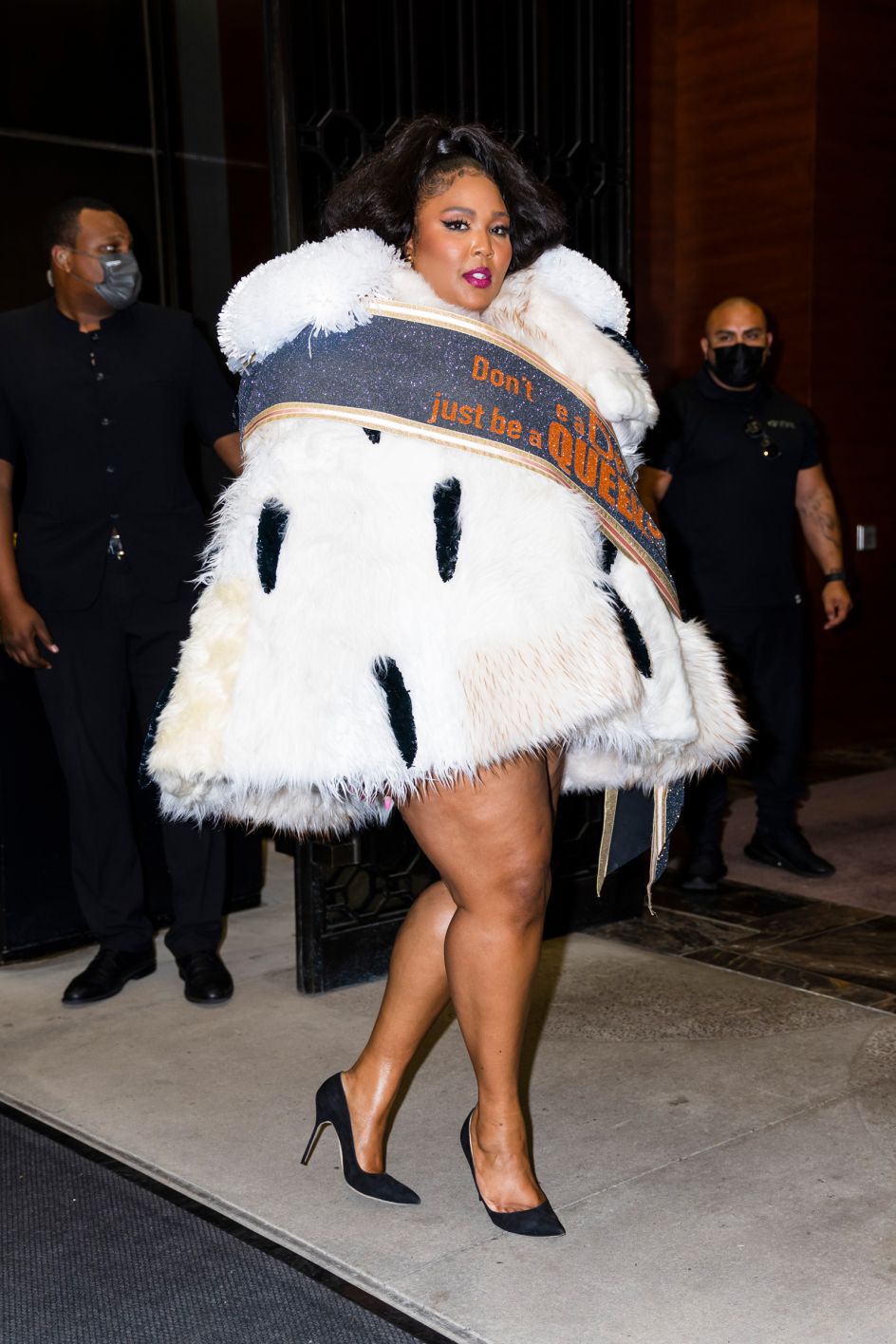
Lizzo wearing Viktor&Rolf, New York City, 2021. Photo: Gotham/GC Images/Getty Images
How did you research it?
The research involved a lot of initial reading and thinking towards the building of the narrative – considering the history of female performance in Europe over the last 200 years and the cultural, social and political landscapes in which the concept of the diva was developing. Following this, the research begins on a long list of initial divas, which is eventually – and with enormous difficulty – narrowed down. Much later on, you begin the more practical research into available collectors and collectors whom we may be able to approach for object loans to build on the fantastic array of objects we were able to gather from the V&A's own collections.
In essence, the thinking behind the narrative has really been bubbling away since 2017, but the last two to two-and-a-half years have really been spent concentrating on diva and pulling it all together.
The lower floor contextualises the role of the diva throughout history: why was that important?
We begin our narrative in the mid-19th century, which is when the term 'diva' was first applied to female opera singers. This starting point allowed for a natural chronology in which we could explore the origins of the term and its permutations until the 1960s, a time when diva activity really seemed to kick up a notch. Underpinned by the second wave of feminism and the women's liberation movement, it really felt like a significant moment from which to explore the contemporary notion of the diva.
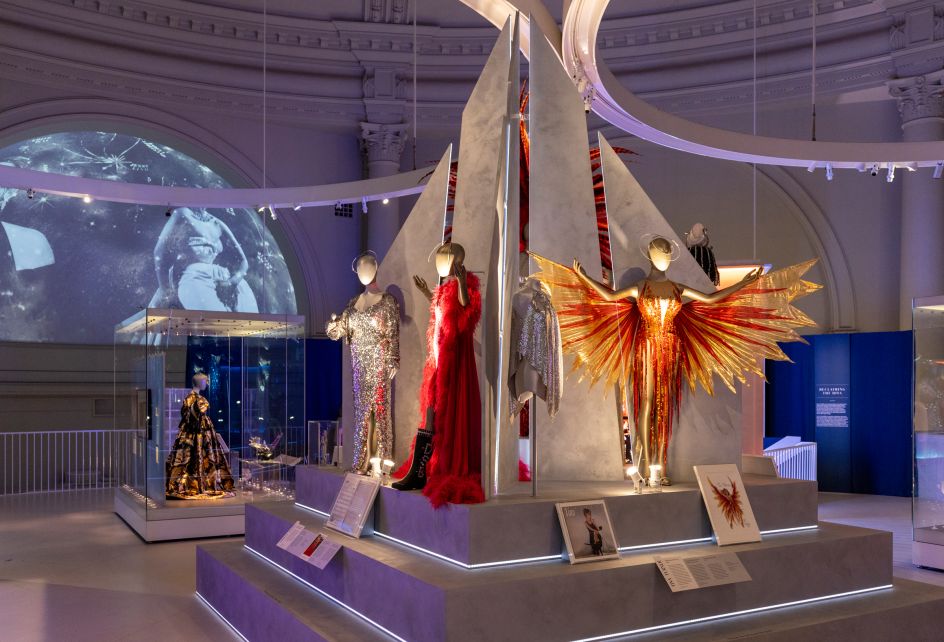
Behind the scenes at Diva at the V&A © Victoria and Albert Museum, London
We didn't want it to be a fully chronological show, which would've had to have 'ended' on perhaps just a small number of the most current contemporary divas. We really wanted a more holistic view of the modern understanding of the term, without any notion of hierarchy, specifically since so many of our divas are still with us and creatively active. Taking all this into account, a thematic approach felt more appropriate.
How hard was it to get hold of these iconic pieces?
We did a lot of research into other museum collections as well as private collectors. As a museum, there is a very established loan process in place through which we might borrow for exhibitions. However, every loan starts with a simple email, Zoom call or meeting. We've been lucky in that the curators and collectors we've spoken to have been generous with their objects, knowledge, and time. Practical considerations do come into play, of course, so we have to consider cost, resourcing, location, availability, etc., when putting the loans together.
This is a performance, not a fashion exhibition. However, we recognise the impact of a mounted costume. They carry a certain energy; they are a very visceral link to the divas we are celebrating, and seeing their costumes while listening to their recordings is an experience and perhaps the closest we will get to seeing many of them in the flesh.
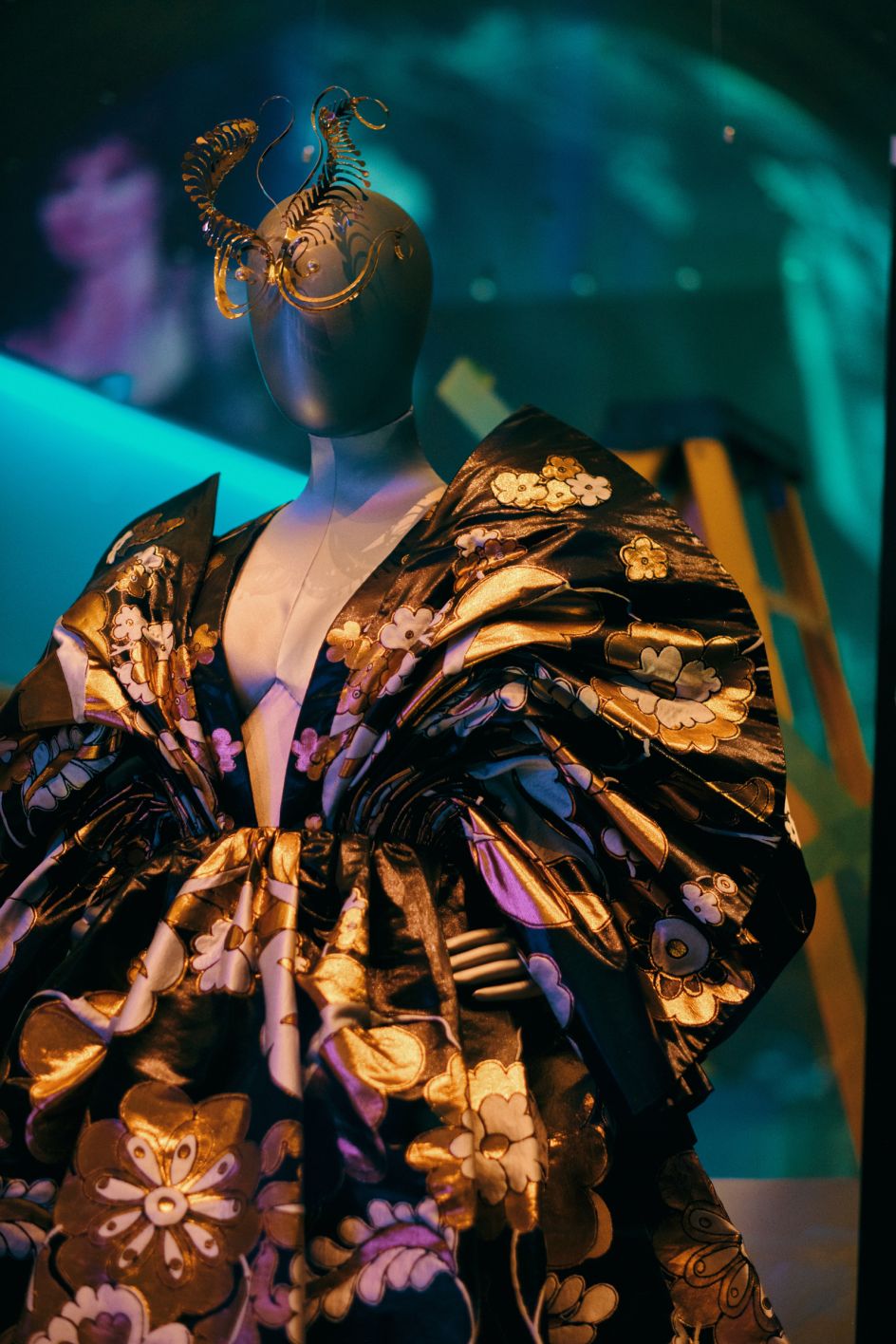
Behind the scenes of Diva at the V&A. Photography by Jamie Stoker
What's the ultimate message behind this exhibition?
We hope the exhibition reflects the breadth of the contemporary meaning of the diva. This exhibition does reclaim it as a positive. From its initial meaning as a way of describing divinely talented performers, which over time became more frequently used to describe the behaviour of solo female performers. Nowadays, diva is a term for individuals with attitude, a strong sense of self, dedicated to their craft and their audiences.
Was it important to include male as well as female divas?
We believe the diva term absolutely crosses genders. The men we've featured have all confronted the status quo, experimenting with expressions of femininity in their stage looks and performances. I'd like to think this expanded use of the term is a reflection of the general progression of society's thinking surrounding these topics.
What role do you think divas play in society today?
In terms of representation and visibility, they can be invaluable, inspiring current and future generations of artists. These exceptionally talented, hardworking and trailblazing performers have been given a voice and a platform, with which many not only entertain but also lead, influence and inspire through their courage to question the status quo, push boundaries, shine a light on injustice and express themselves fearlessly.
Why was music used to accompany the exhibition?
We felt it was absolutely essential to be able to hear the voices we've been celebrating. At its core, this is a performance exhibition, and it was absolutely fundamental that these divas should be heard!
How much do you think social media has contributed to the liberation of the diva stereotype?
I think the key to this is the fans. The fans can engage with their idols in a way that simply wasn't possible before the advent of social media – new levels of immediacy, intimacy, openness and accountability are being explored. The fans can also find each other online, creating communities and galvanising into action. The modern fandoms of today's divas can wield significant power en masse, whether advocating for their chosen divas or advocating.
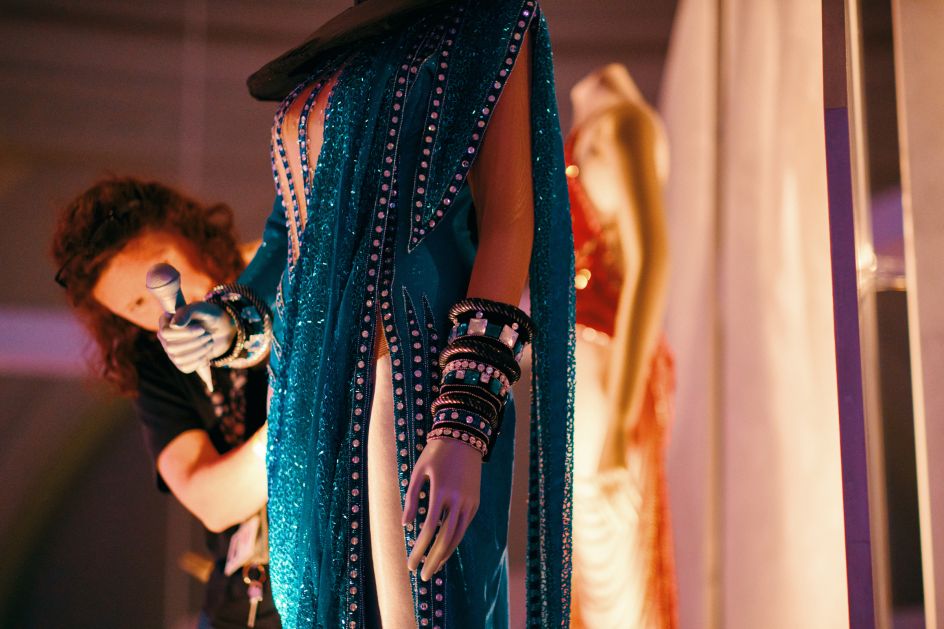
Behind the scenes of Diva at the V&A. Photography by Jamie Stoker
Where do you see the diva evolving in future?
It's difficult to say – looking at the megastars of today with the likes of Rihanna and Beyoncé who are absolutely at the top of their game and are definitely calling the shots in terms of their own career trajectories, it feels as if the sky is the limit. The leverage to be able to fully explore your own artistic vision, take creative risks, and further the cultural conversation is of continued benefit to us all, of course. And eventually, who knows? If a reality TV star can become president of the USA, why not a diva?
DIVA is at the V&A South Kensington Cromwell Road London, SW7 2RL until 7 April 2024. The museum is free to enter and open from 10.00-22.00 on Fridays and 10.00-17.45 on all other days. Tickets to the exhibition are £20 or free for members.




 by Tüpokompanii](https://www.creativeboom.com/upload/articles/58/58684538770fb5b428dc1882f7a732f153500153_732.jpg)


 using <a href="https://www.ohnotype.co/fonts/obviously" target="_blank">Obviously</a> by Oh No Type Co., Art Director, Brand & Creative—Spotify](https://www.creativeboom.com/upload/articles/6e/6ed31eddc26fa563f213fc76d6993dab9231ffe4_732.jpg)








